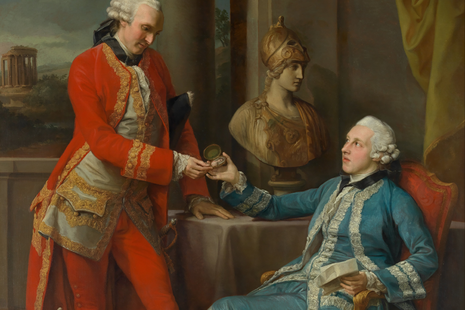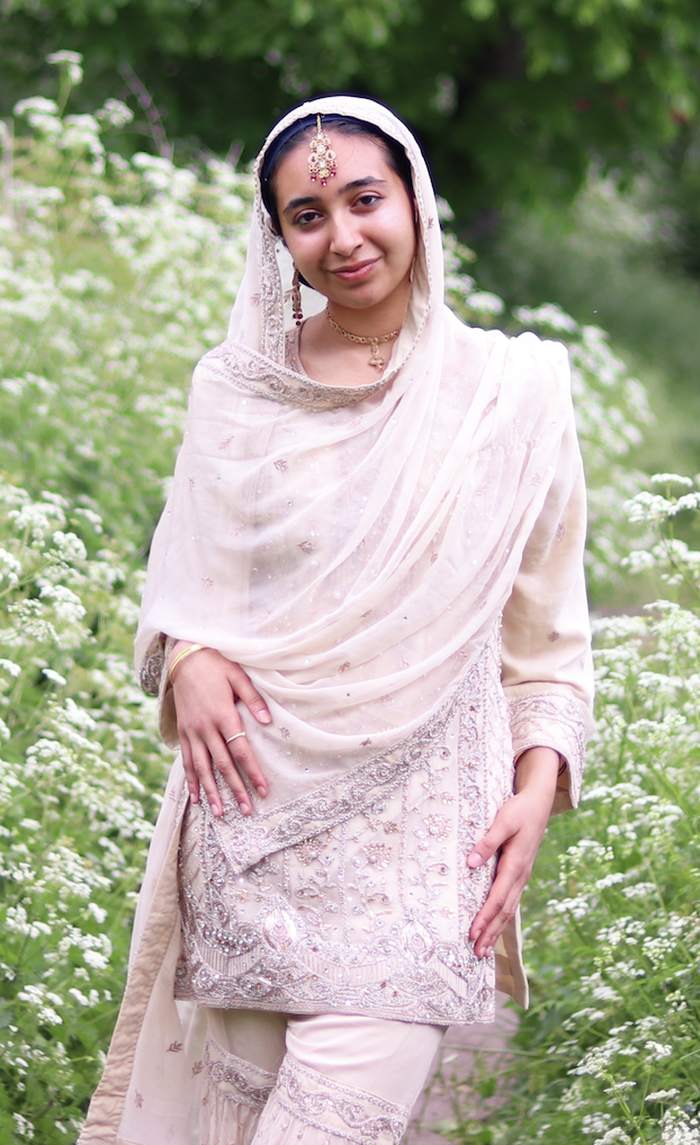Fashion is for men, too
Zoe Blackburn provides a historical account of changes towards men’s fashion, and encourages men to embrace what fashion can offer

Too often, fashion is something only women are expected to take an interest in. ‘Fashion’ is frequently used as a byword for ‘women’s fashion’. The assumption is that fashion is an inherently feminine pursuit, associated with men only in a context of queerness and campness, a theatricality that steps outside of socialised conventions of masculinity. But historically, men – even more than women – have used fashion as a way to express identity and status. So when did we revise fashion as female, and how can we recover some of the playfulness and experimentation that used to define men’s relationship to fashion?
Believe it or not, men haven’t always defaulted to tracksuits. Renaissance men, those who could afford it, wore tight-fitting doublets, brightly coloured trunk hose and unbuttoned their jerkins suggestively. In a portrait held in the Dulwich Picture Gallery of Nathan Field, the Renaissance dramatist and actor lets his lace-trimmed silk shirt gape open, exposing his bare chest. Fashion in the Renaissance was a way to enhance a young and wealthy man’s heartthrob status and masculine gender identity in heterosexual contexts, not detract from it.
“Men loving fashion is not new, but being marginalised for loving it certainly is”
In the eighteenth century, fops or fashionable men-about-town wore different powdered wigs for different gigs, had their silk waistcoats decorated with embroidery and strutted their stuff in square-toed leather high heels. A three piece suit (shirt, breeches, waistcoat down to the thigh) was essential. Silk stockings were designed to accentuate the muscles in a man’s calves, three-pointed hats were used to accessorise outfits, and the hilts of swords were used as a kind of jewellery, flashing military prowess from beneath a man’s coat skirts. Men as well as women wore makeup. White paste, rouge and blue veins that were painted on imitated translucently pale skin in order to emphasise class privilege, separating fashionable fops from manual labourers who had to work in the sun.
It was only at the beginning of the nineteenth century, with shopping culture on the rise thanks to the industrial revolution, that men’s fashion became noticeably less adventurous than women’s. Clinging pantaloons still provocatively showed off men’s legs, but dull, neutral colours (think navy and beige) became the norm, whilst accessories and ornaments for men were in decline. In the Renaissance, the length of a man’s trunk hose was constantly changing, with armour having to change shape just to keep up.
But in Victorian London, men’s fashion trends were changing more slowly than women’s. Department stores had decided that fashion was a woman’s game: specifically, that shopping could be marketed as a bourgeois leisure activity for middle class women in contrast to men who were expected to work, to afford the shopping and browsing of wives. Even so, the nonconformist figure of the dandy – the nineteenth-century man-of-clothes – persisted, but to begin with he was mainly seen as a symbol of shopaholic vanity. The dandy was subversively self-centred, going against the figure of the male breadwinner constructed in the period. The man who earned dough was supposed to provide selflessly for his family, not spend money frivolously on clothes.
“The radical joy and self-expression found in fashion is something all men could learn from”
That image of the dandy, however, was to change at the end of the century. After the trial of flamboyant dandy and queer writer Oscar Wilde for ‘gross indecencies’ in 1895, dandyism was cemented as a marker of effeminacy and homosexuality. Men’s fashion, from this point onwards, would be associated with opposing norms of gender and sexuality, not reinforcing them, conflated explicitly with queerness.
The femininity and queerness associated with fashion now, then, is not inherent in fashion itself. These are artificially manufactured assumptions produced by capitalism, designed to profit off of women’s free time as gender roles narrowed and solidified. Not only that, these assumptions are a product of the homophobia and misogyny that accompanied the demonisation of male homosexuality as a deviant form of masculinity – as recently as the nineteenth century. Men loving fashion is not new, but being marginalised for loving it certainly is.
We live in a society that unnaturally and unfairly asks men to suppress all passion for fashion for fear of being labelled feminine or queer. And these fears and concerns are valid: it is terrifying as much as freeing to go against what society demands of you. But the radical joy and self-expression women and queer communities continue to find in fashion is something men at large once enthusiastically shared in, and something all men could learn from.
Fashion (etymologically from ‘facere’ - to make or do) is not inherently for anybody. It is just something to do, a way to make yourself – at least aesthetically – into the person you want to become. Before fashion was a queer pursuit or a feminine pursuit, it was a masculine pursuit, all of which suggests it’s really a human pursuit. Fashion is first and foremost a creative activity, a way of signalling mood, character, personality and identity – whatever those happen to be. So, to any fashion-averse men reading this, the next time you open your wardrobe, instead of deferring to the same grey hoodie (I promise I’m not judging), feel free to experiment. Fashion is for you, too.
 News / Gov declares £31m bus investment for Cambridge8 December 2025
News / Gov declares £31m bus investment for Cambridge8 December 2025 News / Uni redundancy consultation ‘falls short of legal duties’, unions say6 December 2025
News / Uni redundancy consultation ‘falls short of legal duties’, unions say6 December 2025 Science / Fancy doing research this summer? A guide to getting involved as a student8 December 2025
Science / Fancy doing research this summer? A guide to getting involved as a student8 December 2025 News / Write for Varsity this Lent3 December 2025
News / Write for Varsity this Lent3 December 2025 News / Cambridge students accused of ‘gleeful’ racist hate crime4 December 2025
News / Cambridge students accused of ‘gleeful’ racist hate crime4 December 2025










